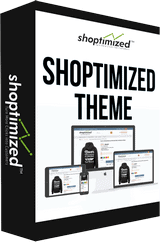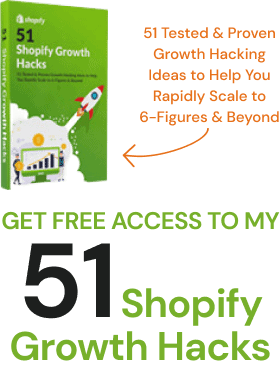This is How to Identify Your Shopify Store’s Conversion Killers – Part 4 of a four-part series that began here.
Visitor Intelligence Tool #10 – Usability Testing
In part two we talked about how co-browsing can be like conducting the ultimate usability test. But realistically, only a handful of Shopify stores are ever likely to need to offer co-browsing to their visitors. So what do you do if you want some cold, hard truths about your store to help improve your sales?
Well, usability-testing (or user-testing, for short) is a really quick (and sometimes dirty) way of gathering feedback. Which will help you stop “trying to read the label from inside the bottle”. Or in other words, because you can’t see what’s wrong with your Shopify store. Also, because you’re too close to it, user tests are an ideal way to get a fresh perspective.
The insights you gather from user testing can transform your business. In a case study by UserTesting, their client Walmart Canada increased overall revenue by 13% from layout redesign resulting from user testing.
What is a user test?
Fundamentally a user test is asking someone to carry out tasks on your website. And then biting your lip whilst they struggle to complete them. Typically this would be asking them to imagine that they’d just arrived at your site from a Google search or Facebook ad. And then asking them to find an item, add to it to the cart, and checkout.
Who to recruit for your usability-tests
The ideal people to carry out usability tests on your store are real prospects. This is because they’re actually in the market for your products right now. This means that their fears or concerns or sales objections are 100% valid, rather than based on conjecture.
What’s more, you’d be surprised how effective it is to carry out user tests on people who have literally just purchased. Simply ask them if they’d be willing to retrace their steps because all the thought processes they had will be fresh in their minds if you’re able to get to them quickly.
Ask these recent buyers to describe what they thought at each stage from your ad to landing page to cart and checkout. Recalling the hoops they had to jump through and the hurdles at which they nearly fell can be incredibly revealing for you as the store owner.
You can use tools like Hotjar to trigger an invitation offering an incentive to partake in your usability test. You can take them through a short survey to qualify them and then you can choose who to follow up with.
Keep in mind that the people who volunteer to take part are self-selecting which means they don’t necessarily represent your average visitor. And for the prospects you recruit, they may be more time-rich and cash-poor than your average visitor. Regardless, they still tend to be much more qualified than someone who has no intention of buying your product.
Another way to recruit qualified people is to invite them from a simple note at the end of your support/transactional emails or get your customer service team to ask them at the end of a phone or chat conversation.
Of course, it’s not always an option to recruit real prospects, for example, if you haven’t started running traffic to your store yet or if you need feedback in hours not weeks. So the next best thing is to recruit people who match your target demographic…
And the easiest way to tap into a pool of people who are in the same demographic as your target market is to use a usability-testing service like userinsights.com, userbrain.net, or usertesting.com (enterprise-level).
Failing that, someone who just happens to be nearby when you need feedback can often give you incredibly helpful insights. This could even be someone in Starbucks that you offer to pay for their coffee in return for 10-minutes of their time (just don’t be creepy or weird when you ask).
Tip: If you’re asking someone for feedback, never let on that the site is yours, they’ll usually try to spare your feelings which isn’t helpful. Tell them you’re a consultant or independent researcher and make it clear that they won’t hurt your feelings by being brutally honest.
How to conduct usability tests that glean profitable insights
As you might have guessed, there are two ways to run your user tests. The first is remotely by either sending users you’ve recruited to a platform like userbrain.net or by leveraging their panel of user-testers.
Users complete the tests unmoderated and within a few hours, you’ll receive recordings of the usability-testing sessions that you can review in your own time.
The second method is doing it live, either online or in person. If you’re doing it online, use an online scheduling tool, like youcanbook.me to schedule people into time slots you’ve preset.
Next, invite participants to a screen-sharing call using a service like Zoom which you can record (it’s always a good idea to take a backup recording with Camtasia or Screenflow too). Just make sure you’ve told your participants upfront that the call will be recorded, in case anyone gets weird about it.
Once you have someone on a call, here are the steps I use:
- Thank them for their time.
- Reassure them about the incentive you offered and how they will receive it.
- Remind them that the call is being recorded.
- If applicable, provide them with test credit card details to use at the checkout.
- Put them at ease and that there are no mistakes, it’s the website that’s on the test, not them.
- Remind them that you’re impartial so they can’t offend you with their feedback.
- Ask them to comment on the images they see. Think and read out loud and express their feelings of frustration, anxiety, happiness, etc.
- Question them to shout out any ideas for improvements as they go.
- Ask them to complete the task and tell them that you won’t interfere if they appear stuck. Any questions they have can be answered at the end.
- Once they have completed the task. Ask them again for any tips or ideas for improving things in case they missed anything.
- Thank them again and remind them how and when their incentive will be sent.
During the user test, your job is to shut up and take notes furiously. You’ll likely find that ideas are popping into your head left, right, and center as you see someone stumble through your site.
Carrying out user-tests can seem daunting at first, but even if you outsource them to userbrain.net. For example, after only a handful of tests, you’ll have a long list of ideas for improving your store—some of which you’ll be so excited about, you’ll literally want to stop everything until they’re implemented.
We used user testing extensively to develop the Shoptimized™ Theme and its 30+ conversion boosting features. That’s why it’s one of the best Shopify themes.
This is How to Identify Your Shopify Store’s Conversion Killers – Part 4 of a four-part series that began here.


